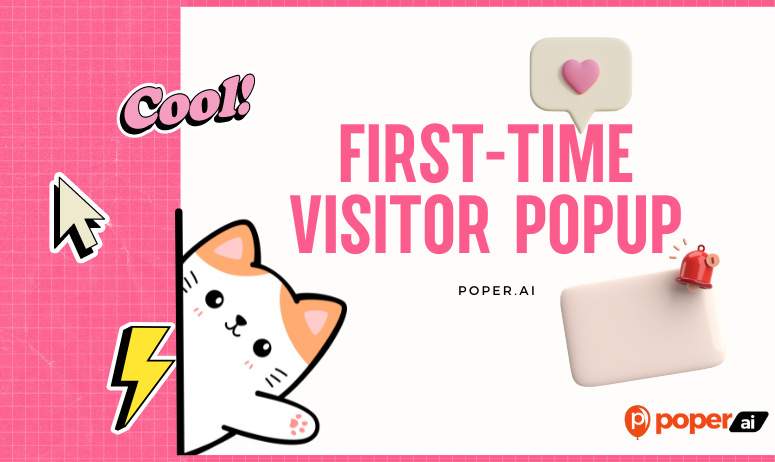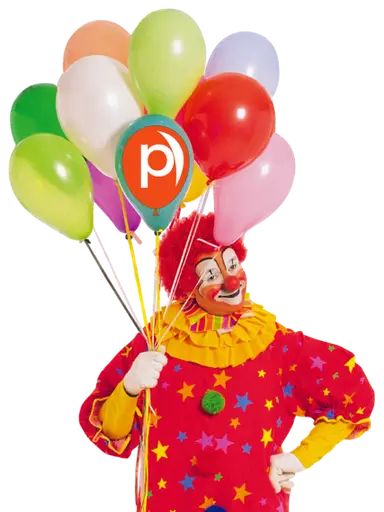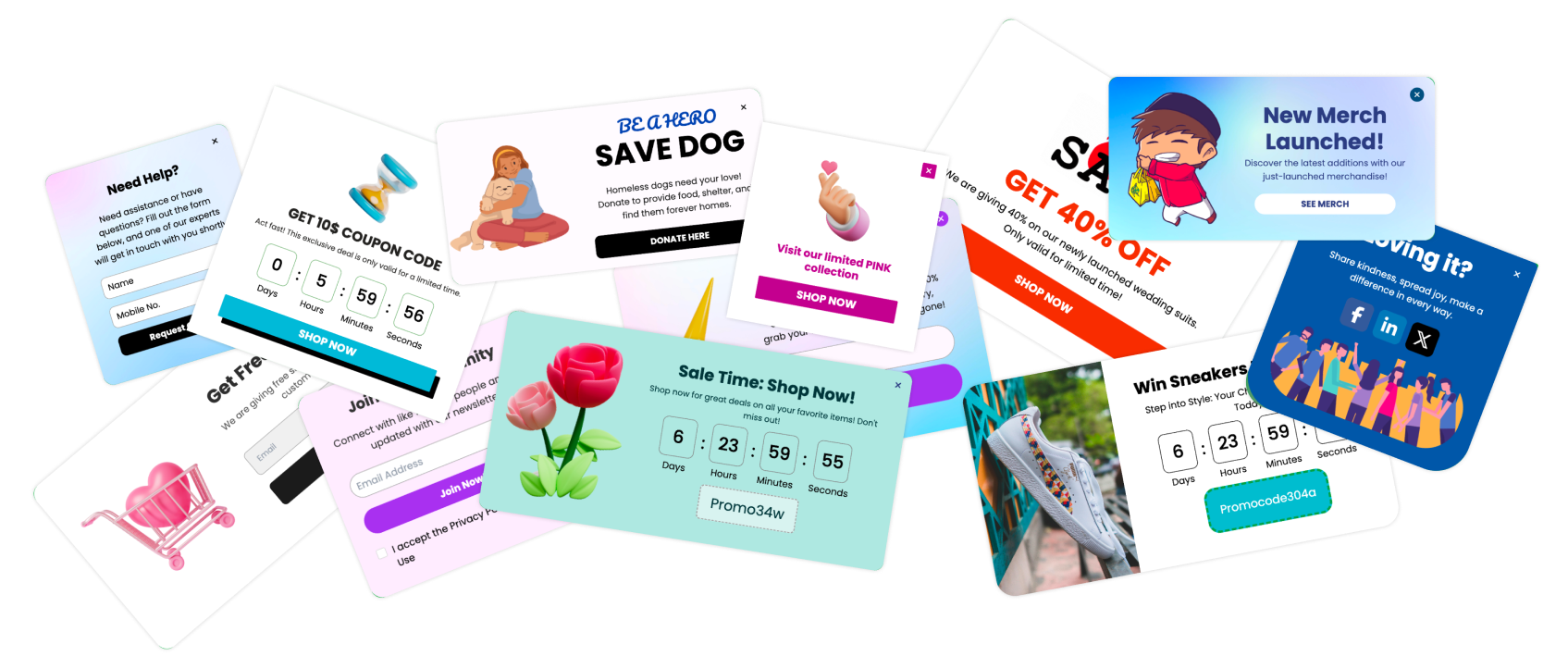First impressions matter, especially on the web. When a new visitor lands on your website, you have a brief window to capture their interest and guide them towards conversion. This is where first-time visitor popups play a critical role. Not only do they help in enhancing website engagement, but they also serve as pivotal tools for boosting conversion rates.
The right popup at the right moment can transform a first-time visitor into a lifelong customer.
Karan Bhakuni
What are first-time visitor popups? These are specially designed-overlays that appear the first time someone visits a website. The goal is to offer something of immediate value, such as a discount or exclusive content, which can significantly enhance the visitor's experience and increase the likelihood of conversion.
Why First-Time Visitor Popups are Important
Enhanced Engagement: These popups are designed to engage visitors by providing tailored messages or offers that are relevant to their needs or actions on the site.
Increased Conversion Rates: By capturing attention and offering value upfront, these popups can turn a casual browser into a subscriber or customer.
Understanding the Value of First-Time Visitor Popups
First-time visitor popups are more than just a digital greeting; they are a strategic tool used to immediately engage visitors and guide them towards key actions. Their effectiveness comes from being able to deliver highly relevant and personalized messages that resonate with the audience from their very first interaction with your site.
The Benefits of Targeting New Visitors
Targeted Personalization: By targeting first-time visitors, popups can be tailored to the expectations and needs of newcomers, which may differ significantly from those of returning users. For example, welcoming them with a special offer or essential information can help in creating a positive first impression.
Immediate Engagement: These popups serve as an immediate touchpoint for engagement, asking visitors to subscribe, take advantage of a sale, or learn more about a product. This prompt response to a visitor's arrival can significantly shorten the journey from introduction to conversion.
Statistical Insights on Impact
Incorporating data into your strategy can vastly improve the effectiveness of your popups. For instance, studies show that:
Conversion rates for popups can range from 3% to 9%, significantly higher than many other marketing tools.
Email list growth can be accelerated by up to 50% with effective first-time visitor popup strategies.
Designing Effective First-Time Visitor Popups
Crafting effective first-time visitor popups requires a blend of aesthetic appeal, strategic content, and psychological insight. The goal is to design a popup that not only captures attention but also feels like a natural, helpful part of the user's journey on your website.
Key Design Elements That Capture Attention
Visual Attractiveness: Your popup should stand out without clashing with the overall design of your site. Using brand-aligned colors, readable fonts, and eye-catching images can make your popup visually appealing and less likely to be dismissed immediately.
Minimalism and Clarity: Avoid cluttering your popup with too much information. A clean design with a clear message and a strong call-to-action (CTA) is more effective. This helps the user focus on what's important without feeling overwhelmed.
Maintaining Brand Consistency
Consistency Is Key: Ensure that your popup reflects the style and tone of your brand. This consistency helps build trust and recognition. Whether it's the color scheme, the tone of the copy, or the type of imagery used, every element should echo your brand's identity.
Adapting to User Expectations: Understand the expectations of your first-time visitors. If your website promises a premium experience, your popups should also convey luxury and exclusivity. Conversely, if your brand is more fun and casual, the popups should be light-hearted and engaging.
Strategic Timing for Displaying Popups
Timing is everything when it comes to deploying first-time visitor popups. The moment at which the popup appears can significantly impact a visitor's perception and their likelihood to engage. Finding the perfect timing involves understanding visitor behavior and strategically planning the popup trigger.
Best Practices for Timing Your Popups to Engage New Visitors
Immediate vs. Delayed Display: While an immediate popup can grab attention right off the bat, it might also overwhelm or aennoy visitors. A delayed popup, shown after a few seconds or once the visitor has engaged with the content, often results in higher engagement rates as it allows visitors to first get a feel of what your site offers.
Behavior-triggered Timing: Advanced strategies involve triggering popups based on specific visitor behaviors. This might include actions like spending a certain amount of time on a page, scrolling through a percentage of the page, or attempting to leave the site (exit-intent popups).
How to Determine the Optimal Moment to Display Your Popup
Leverage Analytics: Use website analytics to understand when visitors are most likely to convert. This data can inform the timing of your popup to maximize effectiveness.
Test Different Timings: Implement A/B testing to experiment with different timing strategies. This method allows you to directly compare the effectiveness of immediate versus delayed popups or other behavior-based triggers.
Using Poper to Create First-Time Visitor Popups
Poper offers a user-friendly platform that simplifies the process of creating effective first-time visitor popups. With its intuitive design tools and flexible configuration options, Poper enables you to design, customize, and deploy popups that are perfectly tailored to the needs of new visitors.
Step-by-Step Guide on Setting Up Your First Popup in Poper
Step 1: Accessing the Popup Builder
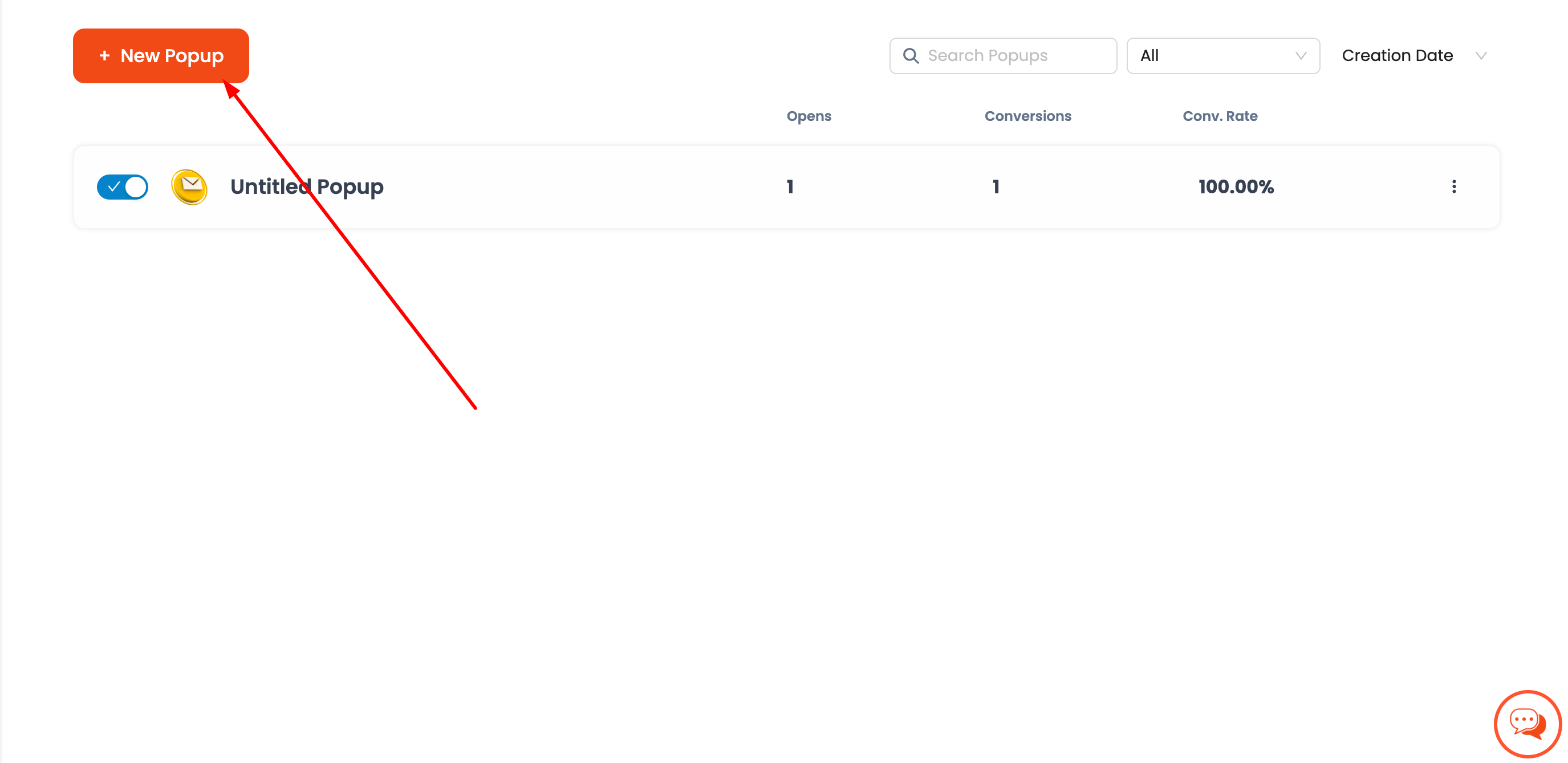
Log into your Poper account and navigate to the 'New Popup' Button This is where you can start designing your popup from scratch or choose from a variety of templates that are optimized for first-time visitors.
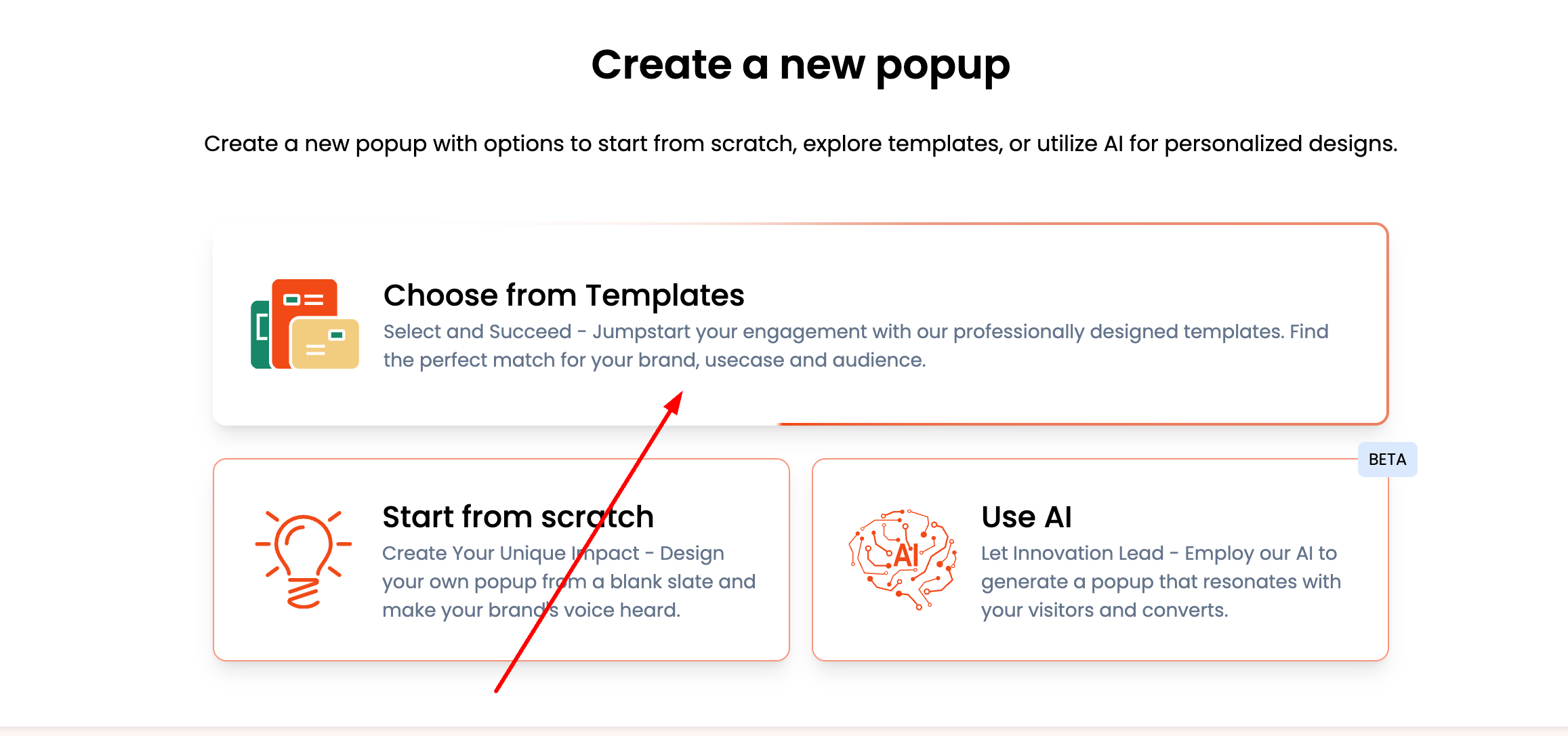
Step 2: Designing Your Popup
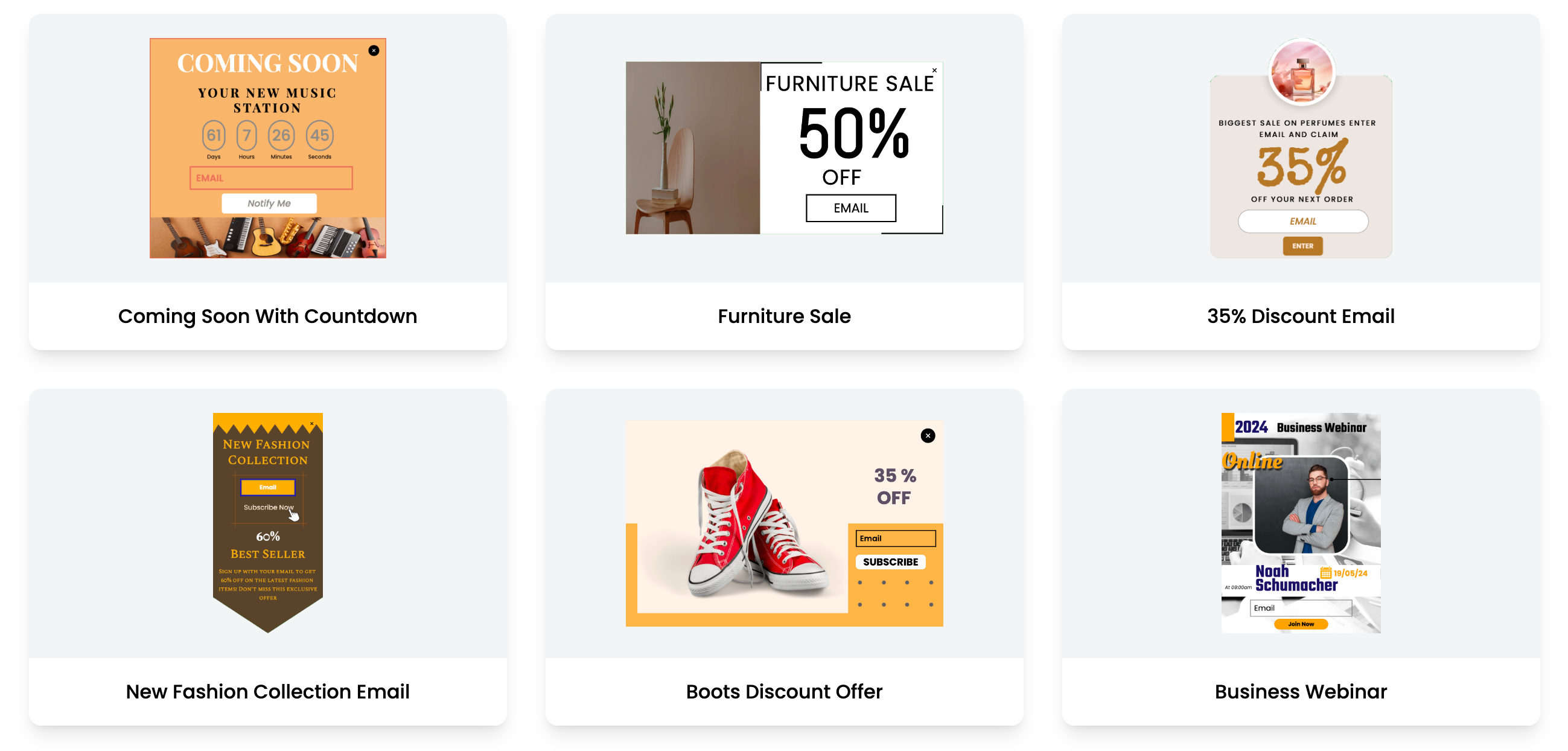
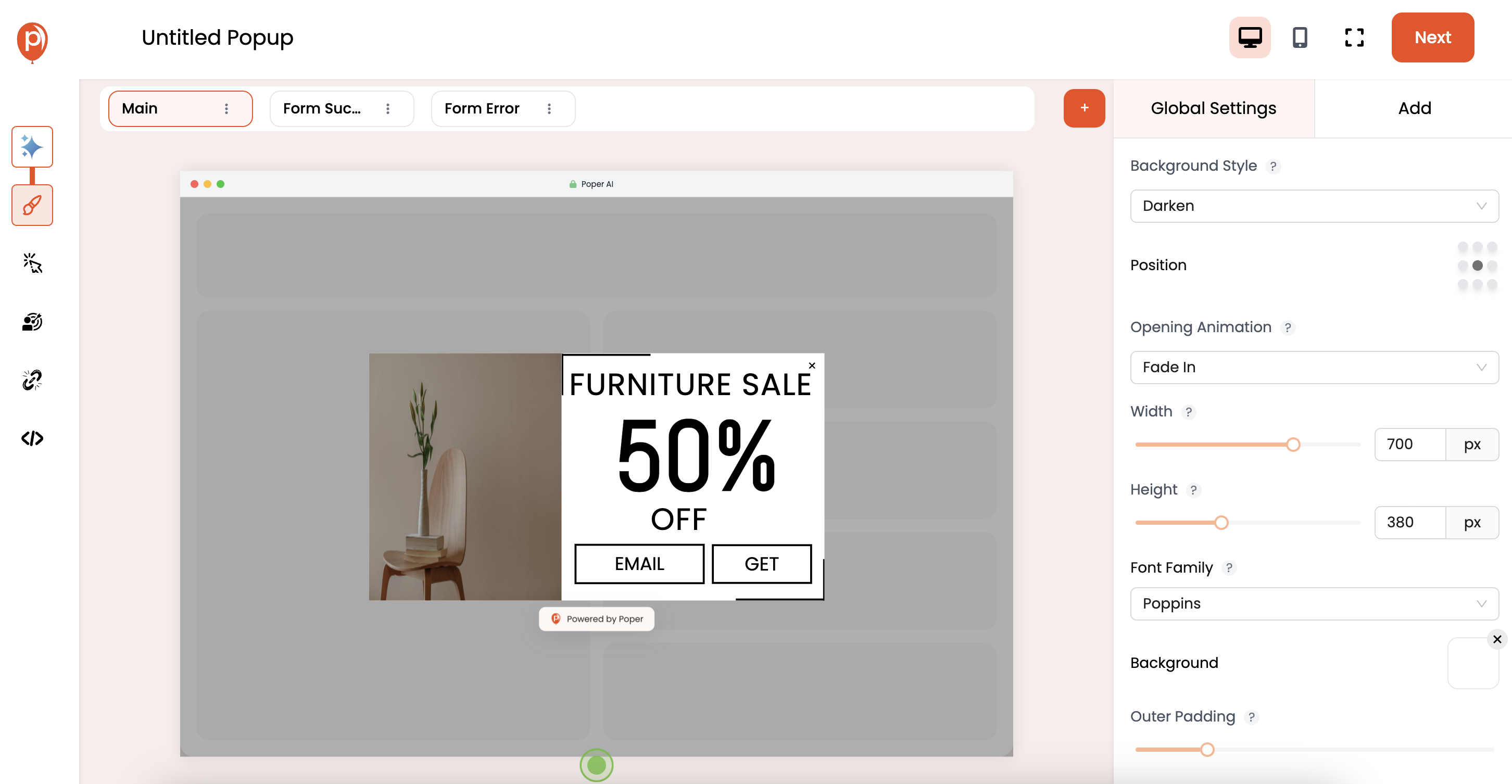
Use Poper’s drag-and-drop editor to add elements like text, images, and buttons to your popup. Customize the colors, fonts, and layout to match your brand’s style and the message you want to convey.
Step 3: Setting Targeting Options
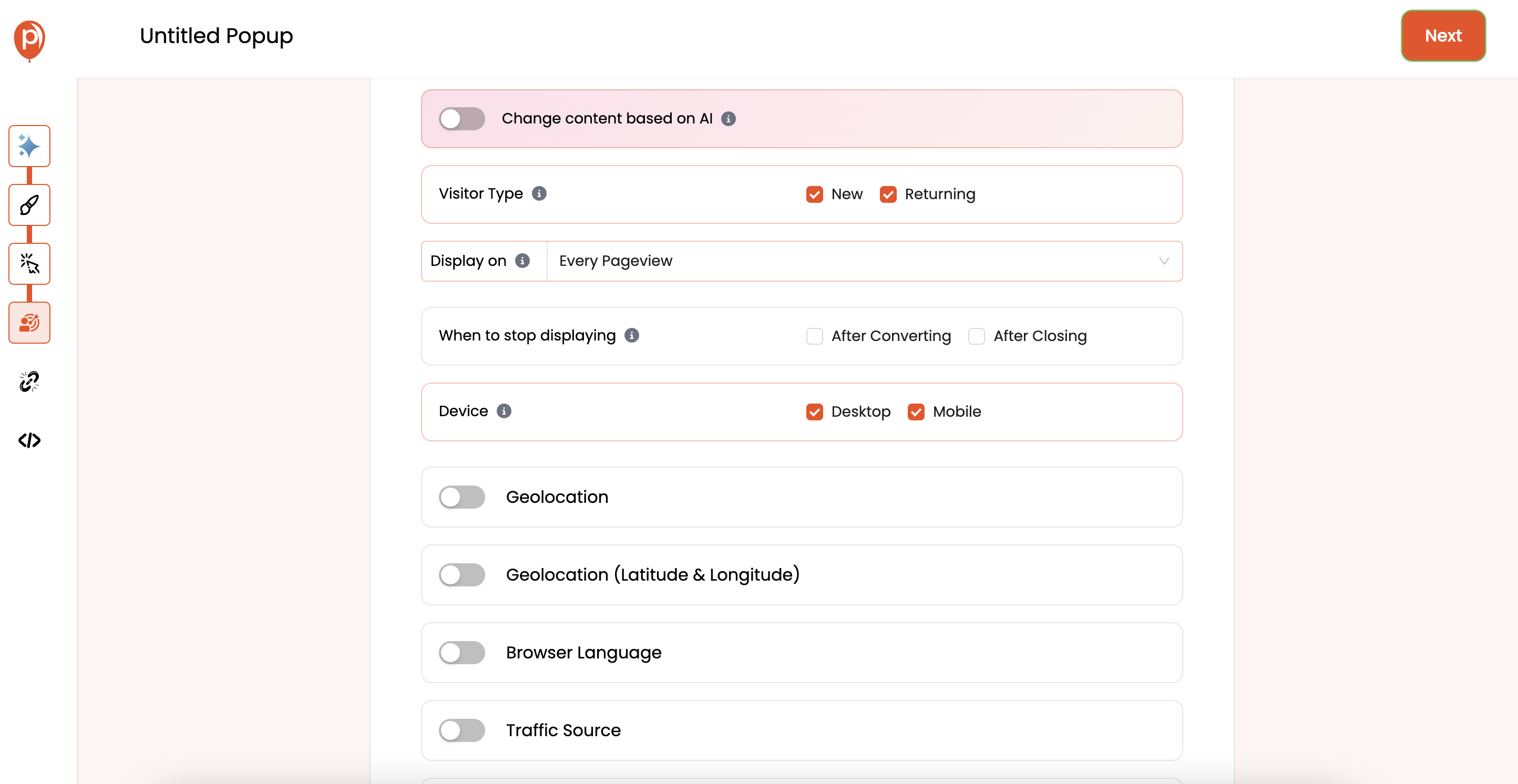
Specify that the popup should only appear for first-time visitors. Poper allows you to set this parameter easily, ensuring that the popup is only shown to new users, thereby customizing their experience right from their first interaction.
Customizing Your Popup Settings for Target Audience Segments in Poper
Segmentation Tools
Utilize Poper’s advanced segmentation tools to further tailor the popup based on additional criteria, such as the visitor’s geographical location or the specific page they are visiting. This level of customization ensures that the popup is as relevant as possible to each visitor’s context.
Behavioral Triggers
Set behavioral triggers for your popup, such as displaying it after the visitor has scrolled through 50% of the page or after they’ve spent a certain amount of time on the site. These triggers help in capturing the attention of engaged visitors at just the right moment.
Crafting Content for First-Time Visitor Popups
The content of your first-time visitor popups is crucial in capturing attention and driving conversions. Crafting compelling, concise, and clear messages can make the difference between a popup that annoys and one that converts.
Tips for Writing Compelling Headlines and Calls to Action
Focus on Value and Urgency
Create a Strong Value Proposition: Your headline should immediately communicate the value the visitor will receive from taking the action suggested. For instance, "Sign Up Now and Get 20% Off Your First Order!" clearly outlines the benefit.
Use Urgency and Scarcity: Phrases like "Limited Time Offer" or "While Supplies Last" create a sense of urgency that can prompt quicker decision-making from the visitor.
Clear and Direct Calls to Action
Be Specific: Your call to action should tell visitors exactly what they need to do. Use action verbs like "Get," "Start," "Join," or "Discover."
Keep it Simple: The simpler and more direct your CTA, the better. Avoid cluttering the popup with multiple offers or actions.
Examples of Effective Popup Content Strategies That Convert
Offer-Specific Popups
Tailor popups with offers specific to the interests or potential needs of first-time visitors based on the page they are visiting. For example, a discount on a product viewed or a free trial for a service discussed on the page.
Engagement-Driven Popups
Use popups to encourage content engagement, such as "Download Our Free Guide to X" on informational pages, which helps in building a mailing list while providing value to the visitor.
Technical Setup and Integration with Poper
Ensuring that your first-time visitor popups are technically sound and seamlessly integrated into your website is crucial for maintaining site performance and user experience. Poper provides tools that simplify the integration process while ensuring that your popups load efficiently and are responsive across all devices.
How to Seamlessly Integrate Poper Popups into Your Website
Minimize Impact on Site Performance
Optimize Images and Content: Use optimized images and minimize the use of heavy multimedia within popups to ensure they load quickly and do not affect the overall page load speed.
Asynchronous Loading: Configure your popups to load asynchronously so that they do not block or delay the loading of other elements on your page.
Ensure Proper Functioning Across All Devices
Responsive Design: Design your popups using Poper’s responsive design settings to ensure they look great and function well on all devices, from desktops to smartphones.
Test Extensively: Regularly test your popups across different devices and browsers to ensure consistent performance and appearance, adjusting settings as necessary based on feedback and performance data.
Ensuring Your Popups are Mobile-Friendly and Responsive
Adapt to Mobile Constraints
Simplify Interaction: On mobile devices, space is at a premium. Design your popups to be easily dismissible and ensure that all interactive elements are easily clickable.
Prioritize Speed: Mobile users expect quick interactions. Ensure that your mobile popups are lightweight and do not hinder the browsing experience.
A/B Testing and Optimizing Your Popups
A/B testing is a critical step in ensuring that your first-time visitor popups not only capture attention but also drive conversions effectively. Through this process, you can refine elements of the popup to determine what works best for your audience.
How to Use Poper’s A/B Testing Features to Refine Popup Effectiveness
Setting Up A/B Tests
Identify Variables: Start by identifying which elements of the popup you want to test. This could be anything from the headline, call to action, images, or even the timing of the popup.
Create Variations: Use Poper to create different versions of your popup. Each version should change only one variable to accurately measure the impact of that specific change.
Running the Tests
Distribute Traffic Evenly: Ensure that traffic to your popups is evenly distributed among the different versions. Poper can automate this distribution to ensure that each version receives a similar amount of exposure.
Monitor Performance: Track the performance of each version in terms of engagement metrics like click-through rates, conversion rates, and any other relevant KPIs.
Analyzing Data from Poper to Make Informed Adjustments
Interpreting Results
Analyze Data: Look for statistically significant differences between the versions. Which changes led to better performance?
Understand User Preferences: Use the data to gain insights into user preferences and behaviors. This understanding can help inform not just popup strategies but broader marketing efforts.
Making Adjustments
Implement Winning Strategies: Once a clear winner is identified, implement the more successful version of the popup across your site.
Continuous Optimization: Digital marketing is never static. Regularly revisit your popup strategies and test new ideas to keep up with changing user expectations and industry trends.
Advanced Features in Poper for Enhancing Popups
Poper's advanced features provide a robust toolkit for enhancing the functionality and impact of your first-time visitor popups. By leveraging AI-driven capabilities and dynamic content, you can ensure that your popups are not only attractive but also incredibly personalized and effedctive.
Leveraging Poper’s AI-driven Features to Customize Popups Based on User Behavior
AI Customization
Behavioral Analysis: Utilize Poper's AI to analyze user behavior in real-time, allowing the popup to adapt its content and timing based on individual user actions and preferences. This can include adjusting offers for users who spend longer times on specific product pages or displaying different messages based on the visitor’s browsing history.
Predictive Triggering: Poper’s AI can predict the optimal time to display a popup based on user engagement metrics. This ensures that the popup appears at the moment when a user is most likely to be receptive, thus increasing the chances of a conversion.
Utilizing Dynamic Content and Interactive Elements in Poper to Increase Engagement
Dynamic Content
Personalization: With Poper, you can set up popups that dynamically change their content based on the data you have about a visitor. For example, displaying a customized welcome message that includes the visitor's location or the specific product category they have shown interest in.
Interactive Elements: Incorporate interactive elements such as quizzes, polls, or sliders within your popups. These elements can make the popup experience more engaging and can provide additional value to the visitor, encouraging further interaction with your site.
FAQs About First-Time Visitor Popups
What are first-time visitor popups and why are they important?
First-time visitor popups are specialized messages that appear the first time someone visits a website. They are crucial because they help capture the visitor's attention early, offering tailored engagements that can significantly enhance the user experience and increase the likelihood of conversion.
How can I design an effective popup for first-time visitors?
To design an effective first-time visitor popup, focus on simplicity and relevance. Ensure the design reflects your brand, the message is clear, and the call to action is compelling. Use visuals sparingly but effectively to draw attention without overwhelming the visitor.
What is the best time to show popups to first-time visitors?
The best time to show a popup to a first-time visitor is after they have had a brief moment to engage with your site's content. This could be a few seconds after they land on the site or triggered by specific actions like scrolling down a page or clicking on a link.
How do I use Poper to create a popup for first-time visitors?
To create a first-time visitor popup in Poper, start by selecting a template or creating a new design in the Popup Builder. Set targeting rules to only display the popup to new visitors, customize the design and content to match your objectives, and use Poper’s behavioral triggers to optimize the timing of the popup’s display.
What common mistakes should I avoid when creating first-time visitor popups?
Avoid making these common mistakes:
Overloading with information: Keep your message concise and to the point.
Being too aggressive: Avoid hard-selling tactics that can turn off new visitors.
Ignoring mobile users: Ensure your popups are responsive and look good on mobile devices.
Neglecting testing: Always test your popups to see how they perform and make adjustments based on real user data.
Conclusion: Best Practices for Leveraging First-Time Visitor Popups
Incorporating first-time visitor popups into your website can significantly enhance user engagement and boost conversion rates. By understanding the best practices and common pitfalls, you can ensure that these tools not only capture attention but also drive meaningful interactions.


